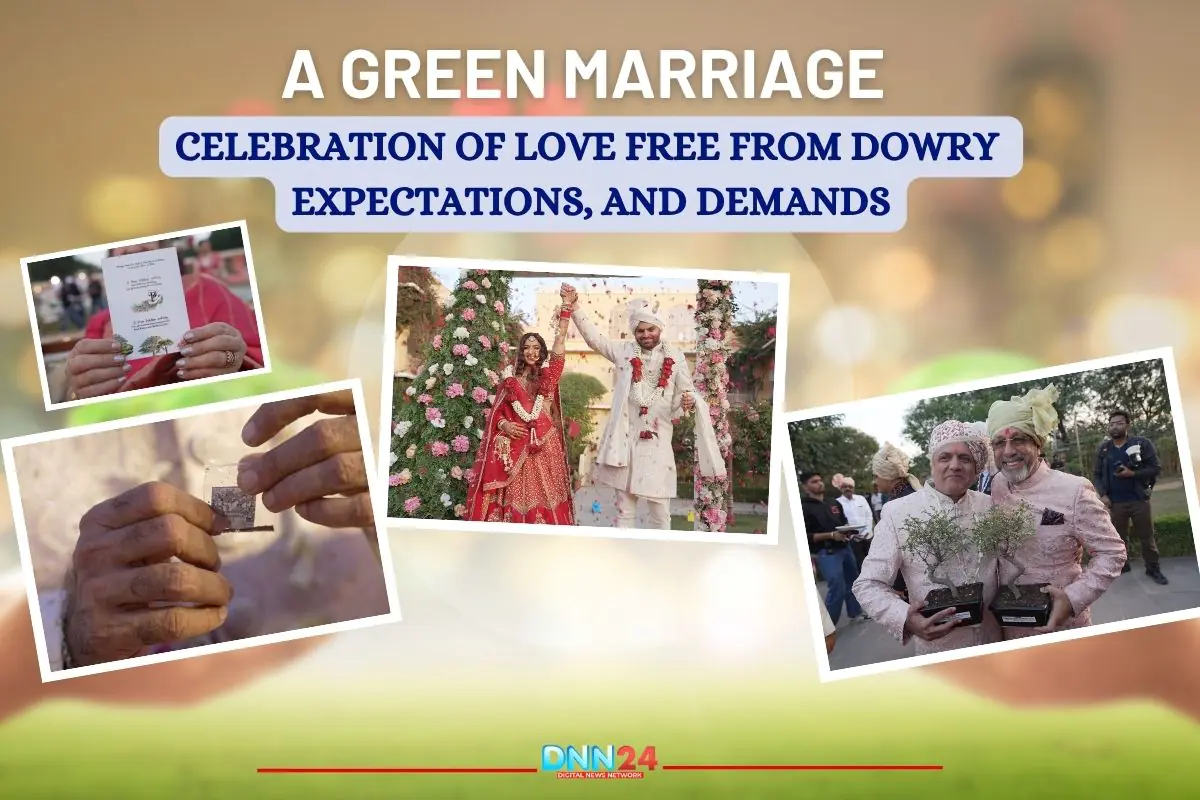In a village where peacocks still dance freely and old temples stand witness to generations, something unexpected happened last Saturday. While most Indian weddings are often adorned with gold and demands, two families sat together and planted a tree instead. No cash envelopes. No jewellery negotiations. Just a sapling, pressed into the earth by Bride and Groom, and a marriage that asked for nothing except honesty. In Samode village near Jaipur, Lakshya Kaura and Pooja Malik proved that the loudest statements often come wrapped in the quietest gestures.
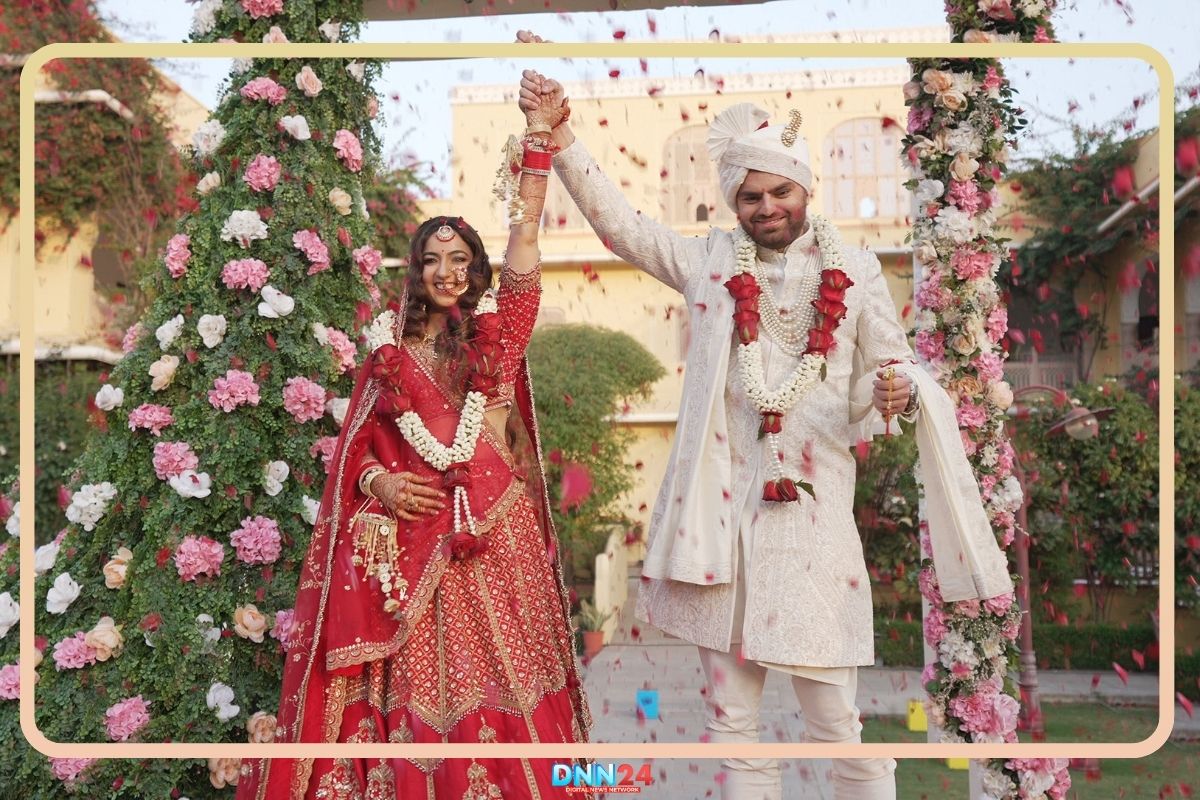
The Ceremony That Broke the Pattern
November 8, 2025, arrived like any other Saturday in Samode. The wedding venue was simple and filled with greenery, with a small gathering of guests. Instead, near the wedding mandap, something unusual took place. Sunil Malik, father of the bride, and Sanjiv Kaura, father of the groom, exchanged a bonsai planter. Not as decoration. As a declaration. This single act carried more weight than a dozen signed agreements. Both understood the significance of this moment.
The Kaura family made no requests. The Malik family felt no pressure. What followed was not a transaction but a union. Each guest received seed packets to take home, a reminder that growth requires no price. The couple planted their sapling together, with both families watching. Roots going down. Branches reaching up. A marriage begins exactly as it should.

Two Professionals, One Shared Vision
Lakshya Kaura graduated from Princeton University, where he learned that education means little without application. His mother, Ritu, comes from an army background. His father, Sanjiv, built a reputation for defending women’s rights when others stayed silent. Pooja Malik studied at Lady Irwin College Delhi and MICA Ahmedabad. She works as a creative entrepreneur, proving daily that purpose and profit need not be mutually exclusive.
Her brother Arjun is a golf coach and competes at the national level. Both bride and groom built careers on merit. Both understood that marriage works best when it starts without debts, spoken or unspoken. They chose each other freely. Their families supported that freedom. The decision to refuse dowry came naturally to people already living that way. When Lakshya and Pooja stood together at the mandap, they represented a generation that refused to carry forward what had never made sense.
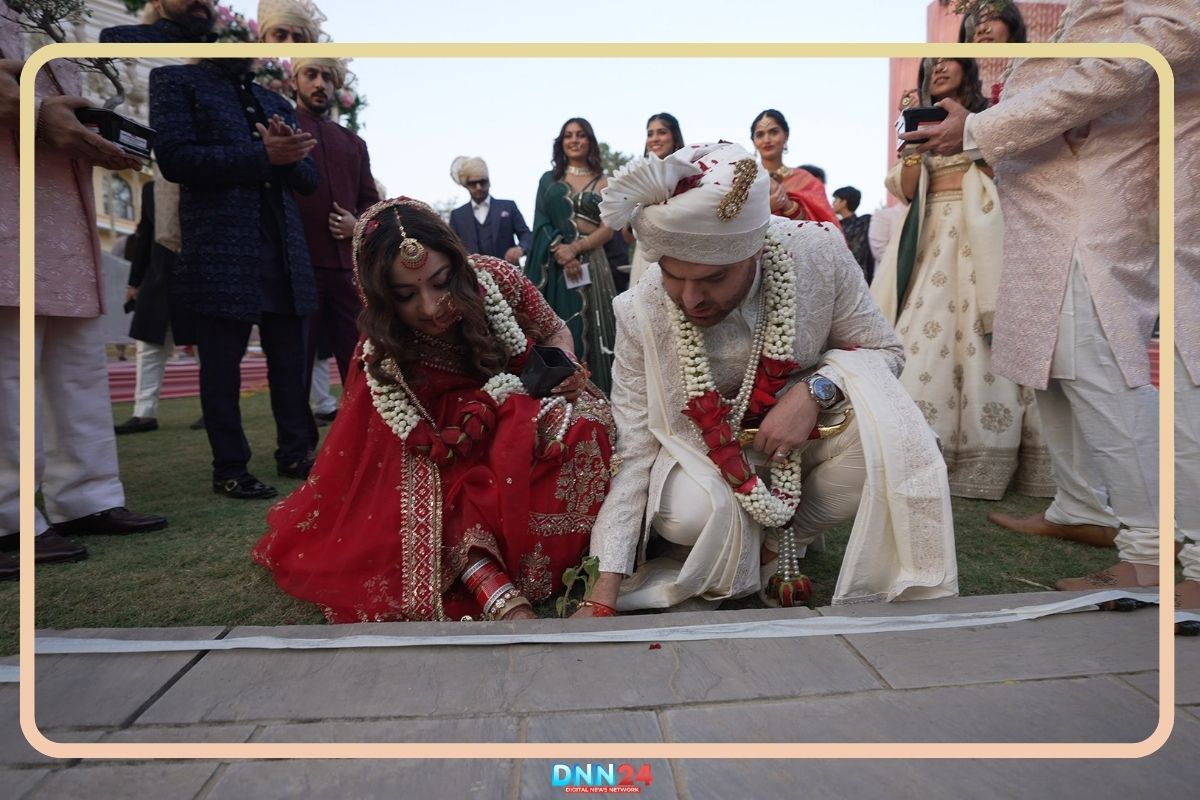
What the Families Actually Said
Sunil Malik spoke with unusual candour. He believes in Kanya Daan but feels grateful that no hidden costs came attached. He called himself fortunate that his daughter was joining a family whose standards he admired. Pooja herself pointed to specific instances where her father-in-law, Sanjiv Kaura, stood up for women facing injustice. She said she felt safe entering a household where such courage was the everyday norm.
Her mother, Rupa, expressed deep satisfaction that her daughter would live among people who genuinely valued women’s dignity. Arjun Malik confirmed that the Kaura family made zero demands throughout the entire process. On the groom’s side, Sanjiv Kaura described the wedding as one that celebrates values over wealth. Lakshya acknowledged that times have changed and expressed pride in participating in a marriage reflecting that change. Ritu Kaura welcomed Pooja with a clear statement: complete freedom to grow, dream, and flourish.

Why This Matters Beyond One Wedding
India’s dowry problem persists despite decades of laws prohibiting it. Families still disguise demands as gifts. Women still enter marriages carrying the weight of what their parents could or could not afford. Violence erupts when expectations go unmet. The practice continues because people treat it as inevitable. Samode village offered a different answer. What the Kaura and Malik families demonstrated was simple: dowry exists because people agree to it. Stop agreeing. Stop negotiating.
The wedding received no media coverage beforehand. No announcements. Just two families doing what felt right. Yet the impact extends beyond the limited guests who attended. Each person who heard about this wedding now carries proof that alternatives exist. The seed packets served as both a metaphor and an instruction. Plant them. Let them grow. Watch what happens when you refuse to feed the wrong traditions.
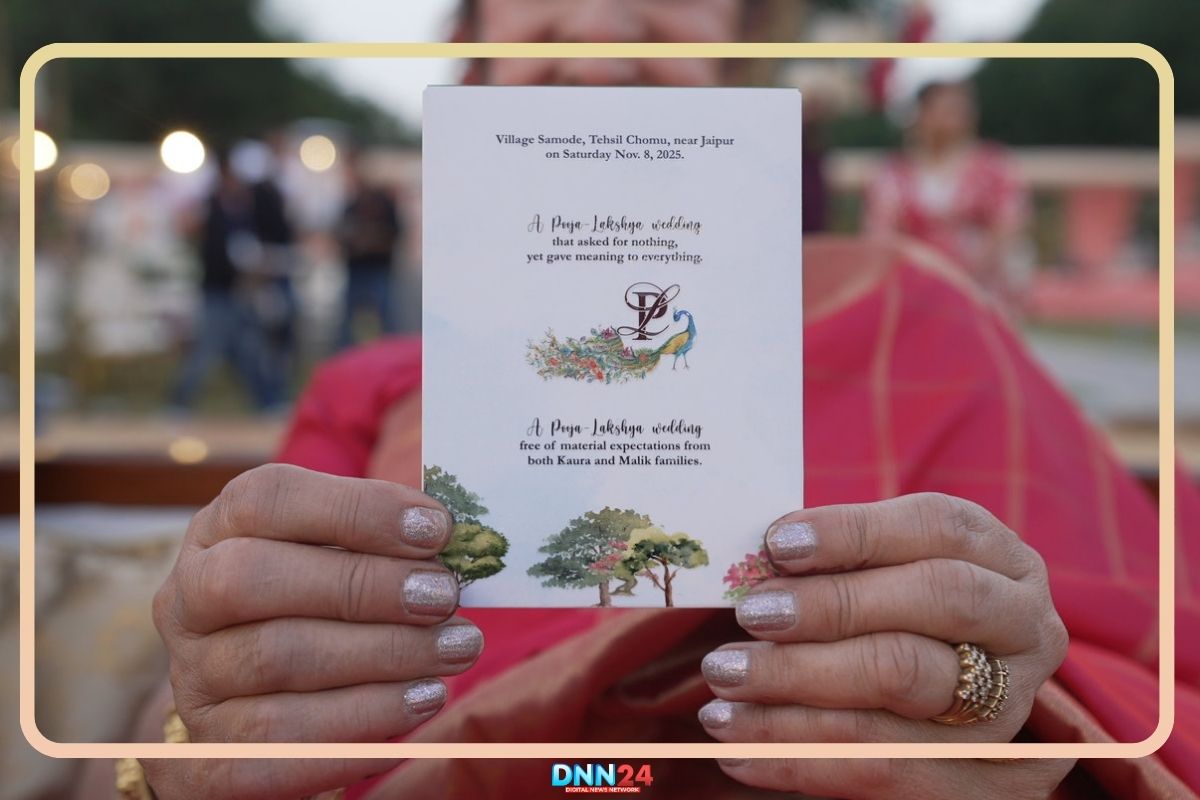
The Green Marriage Model
The term “Green Marriage” aptly describes this occasion in multiple ways. Environmental consciousness played a role. Planting saplings instead of wasting resources and choosing simplicity over excess. However, green also suggests newness and a different approach. The Kaura and Malik families created a template others can follow. Start by refusing dowry completely. Make that refusal public and transparent. Then build the ceremony around values you actually hold, such as caring about the environment, by planting trees.
If you value equality, demonstrate it through action. Keep the guest list small. Spend money on what matters. The exchange of bonsai between the fathers symbolised mutual respect and equal standing. Neither family positioned itself above the other. Neither made demands. The marriage began with both sides contributing dignity, which costs nothing and means everything. This approach does not require wealth. It requires honesty.

What Happens Next
One wedding changes nothing by itself. But patterns start somewhere. The Kaura and Malik families set an example that other families can point to. When young people plan their own marriages, face pressure from parents or relatives, they now have a real story to share. Not theory. Real people who have done this and thrived. Pooja enters her new home feeling safe rather than anxious. Lakshya begins married life knowing his family welcomed his wife with open hearts, not open hands.
Both sets of parents can look at each other with genuine respect. The thirty guests who attended will talk about what they witnessed. Some will dismiss it. Others will remember. A few will try something similar when their own children marry. Change happens this way, slowly and then suddenly. The saplings planted that day will grow. So will the idea behind them. India contains millions of young professionals like Lakshya and Pooja who want marriages based on partnership rather than transaction. This wedding grants that permission.
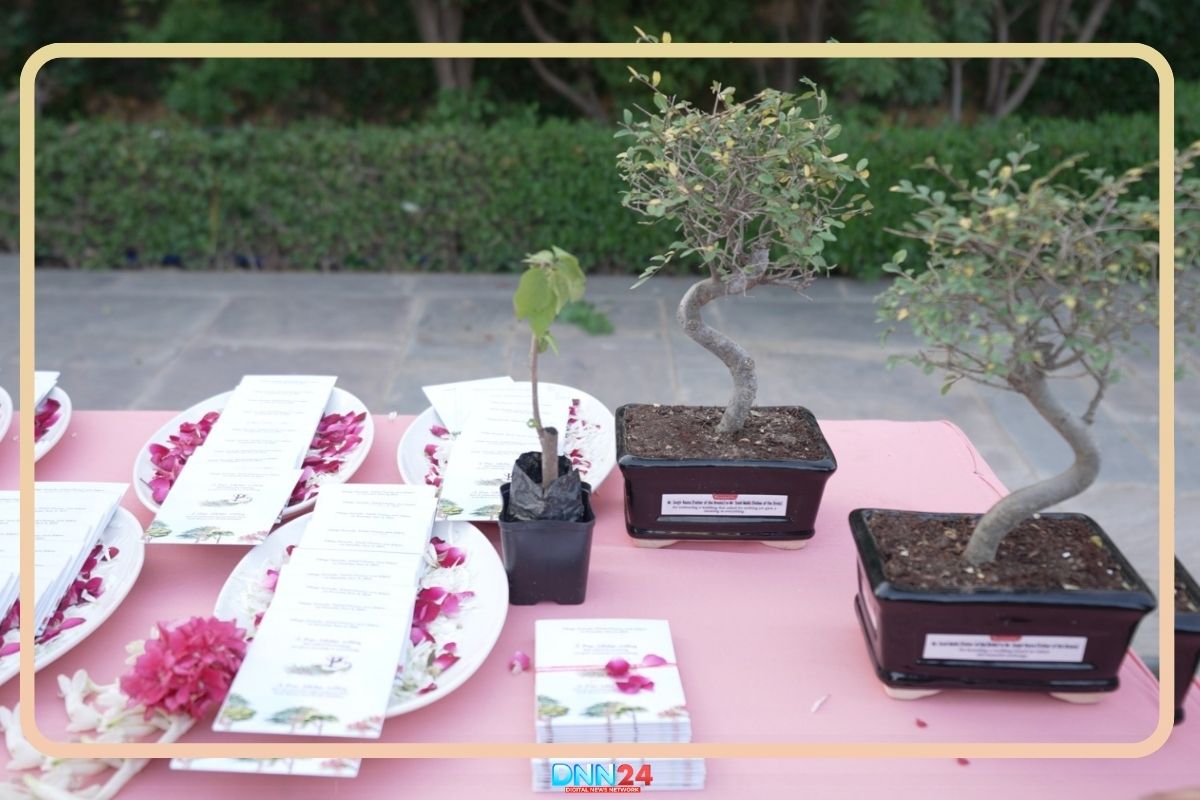
Also Read: Pad Squad: Spreading Menstrual Dignity Across India’s Communities
You can connect with DNN24 on Facebook, Twitter, and Instagram and subscribe to our YouTube channel.

